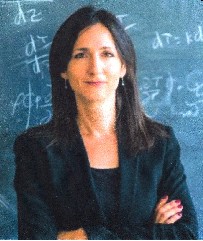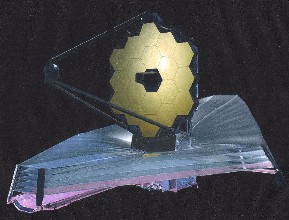 |
Sara Seager
[1] is a Canadian-American astrophysicist
(*1971). She introduced a modified approach to
the Drake equation.
This approach is called the Seager-Equation
and sometimes it is called the Drake-Seager-Equation.
In contrast to the Drake equation, their approach
does not work with the star formation rate, but
with a fixed set of stars, namly systems from the
spectralclass M. |
Seager's
approach is limited to the so-called M-stars, also called
red dwarfs, and the future James Webb Space Telescope
(JWST), [2] and the planned TESS space probe (Transiting
Exoplanet Survey Satellite). [3]
 |
 |
| JWST |
TESS |
The James Webb Space Telescope is virtually the successor
to the Hubble Telescope and is scheduled to be launched
in 2021. The TESS satellite is gone on the journey on 18
April 2018 and is looking for exoplanets using the
transit method. (Sarah Seager uses other indices than
defined in Definition 2.7.2)
The Seager-equation is:
| 10.1.1 Equation |
N = N* · fQ
· fHZ
· fO
· fL
· fS |
The following values for the probability factors are
taken from a document that Sara Seager has placed on the
Internet.[4]
N* stands for the number of M-stars (Red
Dwarfs), which can be examined with the coming telescope
JWST.(30,000 - 50,000)
fQ stands
for the proportion of quiet M-stars. The amount of stars,
which repeatedly throw large amounts of gamma rays into
space is 20 %.
fHZ is the
proportion of those systems that have a planet in the
habitable zone. (cirka 15 %)
fO
quantifies the number of planets that are visible for the
JWST visibly past their star (1% of the potentially
observable planets pass before their star, 10% of which
are close enough to the earth for observation) (0.01 x
0.1= 0.001)
fL
represents the share of planets with life. The factor is
set to one here because one assumes that life could be
created on every habitable planet.
fS s a
measurable biosignature, in the atmosphere. (50 %)
Substituting the values in the equation 10.1.1 yields
N = (30,000 bis 50,000) · 0.8 · 0.15 · 0.001 · 1 ·
0.5
N = 1.8 – 3 technological civilizations
According to Sara Seager, N = 2. This
result shows that intelligent life is also possible in
the case of red dwarfs, as the central star.
|